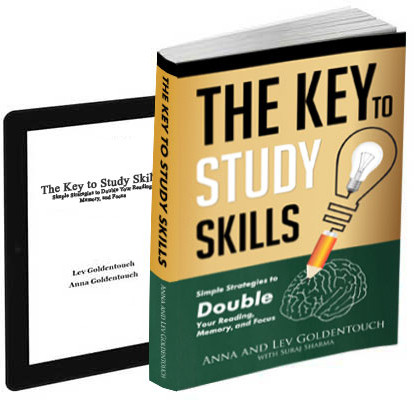Learning by doing is a pedagogical approach that emphasises the active engagement of learners in real-world experiences. This educational philosophy is rooted in the belief that hands-on activities and practical applications significantly enhance the learning process. In this comprehensive exploration, we will delve into the principles behind learning by doing and unravel the reasons behind its effectiveness.
What is Learning by Doing
Learning by doing is a dynamic and interactive learning method that contrasts with traditional passive learning approaches. Instead of relying solely on lectures and theoretical concepts, this approach encourages students to actively participate in tasks and activities. Whether it’s conducting experiments, solving problems, or engaging in simulations, learners are actively involved in the learning process.
Key Characteristics of Learning by Doing
- Active Engagement: Learners are actively engaged in tasks and activities, fostering a deeper understanding of the subject matter.
- Problem-Solving: Emphasis is placed on problem-solving skills, allowing learners to apply theoretical knowledge to real-world situations.
- Experiential Learning: The approach is rooted in experiential learning, where individuals gain knowledge through direct experience and reflection.
- Collaboration: Learning by doing often involves collaborative efforts, promoting teamwork and interpersonal skills.
- Practical Application: The focus is on applying theoretical knowledge in practical situations, bridging the gap between academia and real-world scenarios.
The Effectiveness of Learning by Doing
Increased Retention of Information
Research indicates that individuals tend to remember information better when they actively engage with it. Learning by doing allows learners to create meaningful connections with the subject matter, leading to improved retention and recall. The hands-on experience provides a more vivid and lasting memory compared to passive learning methods.
Development of Critical Thinking Skills
Learning by doing stimulates critical thinking by presenting learners with challenges that require analysis and problem-solving. Through practical applications, individuals learn to think critically, make decisions, and adapt to different situations. These skills are crucial not only in academic settings but also in various professional and personal contexts.
Enhanced Motivation and Interest
Active participation in the learning process fosters a sense of ownership and responsibility. Learners are more likely to be motivated when they see the direct impact of their efforts. This intrinsic motivation contributes to a positive learning experience and a genuine interest in the subject matter.
Application of Theoretical Knowledge
One of the primary strengths of learning by doing is its ability to bridge the gap between theory and practice. Instead of merely memorizing facts and concepts, learners actively apply theoretical knowledge in real-world scenarios. This practical application enhances their understanding and prepares them for the complexities of the professional world.
Skill Development
Beyond academic knowledge, learning by doing promotes the development of practical skills. Whether it’s laboratory techniques, problem-solving strategies, or communication skills, learners acquire a diverse set of competencies that are essential for success in various fields. This hands-on approach aligns with the demands of the ever-evolving job market, where employers often seek candidates with both theoretical knowledge and practical skills.
Long-Term Impact on Behavior
Learning by doing has a lasting impact on behavior and attitudes. When individuals actively engage with a subject, they not only acquire knowledge but also internalize values and perspectives associated with that field. This holistic approach contributes to the development of a well-rounded individual with a deep understanding of the subject matter.
Preparation for Real-World Challenges
The unpredictable nature of real-world challenges requires individuals to be adaptable and resourceful. Learning by doing exposes learners to authentic situations, preparing them to navigate the uncertainties of the professional environment. This practical preparation is invaluable in cultivating resilience and the ability to thrive in diverse and dynamic settings.
Examples of Learning by Doing
Science and Laboratory Experiments
In science education, learning by doing often involves laboratory experiments. Students actively participate in experiments, make observations, and draw conclusions. This hands-on approach not only reinforces theoretical concepts but also instills a scientific mindset and methodology.
Project-Based Learning
Project-based learning is a prime example of learning by doing across various disciplines. Students work on projects that require them to research, plan, collaborate, and present their findings. This approach encourages a holistic understanding of a topic and the development of a wide range of skills.
Simulations and Role-Playing
Simulations and role-playing exercises are common in fields such as business, healthcare, and emergency response. By simulating real-world scenarios, learners can practice decision-making, communication, and problem-solving in a controlled environment, preparing them for actual situations they may encounter in their careers.
Field Trips and Experiential Learning
Taking learning outside the classroom through field trips and experiential learning provides students with firsthand experiences. Whether it’s visiting historical sites, exploring ecosystems, or interacting with professionals in the field, these experiences deepen understanding and offer practical insights.
Challenges and Considerations
While learning by doing is widely recognized for its effectiveness, it is essential to acknowledge potential challenges and consider ways to address them.
Resource Constraints
Implementing hands-on activities may require additional resources, such as materials, equipment, and space. Schools and institutions need to consider these factors and allocate resources to ensure that all students have access to meaningful learning experiences.
Assessment Methods
Traditional assessment methods may not fully capture the learning outcomes of hands-on activities. Educators must explore innovative assessment strategies that evaluate both theoretical knowledge and practical skills developed through learning by doing.
Varied Learning Styles
Individuals have different learning styles, and while some may thrive in hands-on environments, others may prefer more traditional approaches. A balanced educational approach should incorporate a variety of methods to cater to diverse learning styles and preferences.
How to implement learning-by-doing methodology in your organization
Identify Learning Objectives
Clearly define the skills and knowledge you want employees to acquire. These objectives will guide the design and implementation of learning experiences.
Create Real-World Scenarios
Develop scenarios that replicate actual challenges encountered in the workplace. This could involve case studies, simulations, or project-based tasks that mirror the complexities of the employees’ roles.
Provide Access to Resources
Ensure that employees have access to the necessary resources, tools, and information required to complete tasks. This may include training materials, mentorship, and technology platforms that support the learning process.
Encourage Collaboration
Foster a collaborative learning environment where employees can work together, share insights, and learn from each other. Collaborative projects and group activities promote a sense of teamwork and collective problem-solving.
Feedback Mechanism
Establish a feedback loop to provide constructive input on employees’ performance. Timely and specific feedback enhances learning outcomes by guiding individuals toward improvement and mastery of skills.
Integrate Technology
Leverage technology to enhance the learning experience. Virtual reality, online platforms, and interactive tools can simulate real-world scenarios, providing a safe and controlled environment for experimentation and learning.
Leadership Support
Secure leadership buy-in and support for the learning-by-doing initiative. Leaders should actively promote and participate in these learning experiences, demonstrating a commitment to continuous improvement and development.
Evaluate and Adjust
Regularly assess the effectiveness of learning-by-doing initiatives. Collect feedback from participants, measure performance improvements, and adjust the methodology based on the evolving needs of the organization.
Conclusion
Learning by doing is a powerful educational approach that goes beyond the confines of traditional classroom learning. Its effectiveness lies in the active engagement of learners, the application of theoretical knowledge, and the development of practical skills. As education continues to evolve, incorporating hands-on experiences into curricula becomes increasingly crucial in preparing individuals for the challenges of the real world. By embracing the principles of learning by doing, educators can inspire a new generation of learners who are not only knowledgeable but also adept at applying their knowledge in meaningful ways.

Get 4 Free Sample Chapters of the Key To Study Book
Get access to advanced training, and a selection of free apps to train your reading speed and visual memory

